Buying the right air purifier is crucial as if you buy one that has too low a clean air delivery rate for your room it is useless and the best thing you can do is return it. It must also have a true HEPA filter to remove airborne particles and ideally an activated carbon filter to remove gaseous pollutants too small to be captured by a filter.
However, even if you do buy the correct air purifier, you can also render it useless if you do not use it correctly in purifying your indoor air. This has several aspects, but the most important can be summarised as follows-
As a general rule there must be an adequate flow of air through the air purifier at all times for the size of the room. The position in the room is important, as is changing the filters periodically. However the most important aspect is checking air quality with an air quality meter when the purifier is on.
It is easy to plug the air purifier in, switch it on, and assume that the air in the room is being adequately purified. If you check with an air quality meter, you will very often find that the air purity is not optimal.
If you do check the air quality, it will surprise you how hard it is to improve indoor air quality to EPA minimum standards, an 80% reduction in particle count. In one review of studies where air purifiers were used, the users of the air purifiers reduced fine particulate matter between 23-92%. Bear in mind, the EPA recommends a minimum reduction of 80%. So even in experimental studies, most air purifier users failed to hit this target. On the other hand, it shows that air purifiers, when used well, can decrease particle count by 90% This just emphasizes the importance of how you use the air purifier.
The difficulty in hitting the target is partly because particles 0.3um and smaller can penetrate the envelope of a building from the outdoor air easily, and so are constantly entering your home. There is also continuous production of indoor air pollution within the home, for instance-
- pet dander
- dust mite-especially if the relative humidity is above 60%
- mold spores-at relative humidities above 80%
- dust particles
- allergens
- secondhand smoke in a few homes
- particle production from cooking
Most of these can act as asthma triggers but there are even more common and significant health effects from fine and ultrafine particles in the air as outlined in this article which covers the effects of air pollution on health. It has some surprising data and will help you in considering the effect of particles in the air on you and your family’s health.
However, with a few simple techniques applied when using an air purifier it should be possible to get the air very well purified. Here are the things that you need to check and if necessary alter –
The Speed of Air Flow Through the Air Purifier
The first aspect of using an air purifier is the speed of airflow through the filter and the efficiency of the filter both of which can determine the amount of clean air that is created by the air purifier in a particular time period. HEPA filters are more than 99.97% effective at removing particles greater than 0.3um. So providing you have an air purifier with a HEPA filter, the main concern to do with the air purifier itself is the fan speed that you are running the purifier at. If you have not brought one with a HEPA filter you are best replacing it with one that has a HEPA filter.
No matter how brilliant the filter is if the air flow is not good the air purification will not be good
The Association of Home appliance manufacturers (AHAM) specifies air purifiers in terms of clean air delivery rate (CADR). This is specified separately for tobacco smoke dust and pollen. Room size is calculated assuming the room is 8 foot high and will need 4-5 air changes per hour (ACH) to reduce tobacco smoke particles by 80% with continuous operation of the air purifier. The higher the number of air changes per hour the lower the particle count in the air. In some hospital environments, 12-16 air changes per hour are used.
For asthmatics or those with allergic rhinitis, it is best to aim for 8 air changes per hour but at least 5. In heavily contaminated rooms with secondary smoke 8 air changes per hour may be needed.
Now you may think that the AHAM specification of reducing particle count of smoke by only 80% with 5 air changes per hour is not very rigorous, as 20% of the airborne particles will be left in the air. It really is quite a difficult target to hit. In medical studies where people were given good air purifiers the average particle reduction they achieved was only 50%.
Below I plot a graph of particle count reduction versus number of air changes per hour for a room in my house-
However even a brilliant filter will not help if the amount of air processed by the air purifier is not high enough. One air change per hour for a room is when the a volume of air the size of the room goes through the air purifier once in an hour. The EPA recommends that when using an air purifier, there should be a minimum of 5 air changes per hour. This will lower particle count 80%, so 20% of particles are still left in the air. A higher number of air changes per hour will lower the particle count further, but if you put your air purifier on a lower setting eg sleep mode because of the noise you may only reduce the particle count by 30%.
Particularly beware of switching the flow rate down when sleeping. If this takes the number of ACH below 5 then you will be breathing more polluted air for the 6-8 hours that you are in the bedroom.
Close Doors and Windows
When an air purifier is on, the external doors, windows and internal doors should be closed. This is because an air purifier can only purify a certain room size, and if the windows are open, it is like asking it to purify the world! If internal doors are open, then it may well be asking the air purifier to purify an amount of air it cannot adequately treat. The clean-air delivery rate (CADR) will allow you to calculate how large a room your particular air purifier can cope with-see the resources page for a calculator.
Every so often it is good to ventilate your home but choose a time when the air pollution outside is lower than inside. However, obviously if the pollution is higher outside, it would not be a good idea to open windows.
Please remember particles are not the only pollution in the house and that volatile organic compounds, that is chemicals, are also commonly found in houses. These will be at much higher concentrations in the house than outside. So ventilating the house allows these to escape. It is also a good idea to have an air purifier that can remove chemicals-the more activated charcoal the air purifier has the better it will do this.
Timing of Usage
Timing is also an important part of how to use an air purifier. The purifier should be on at least 30 minutes minutes before you are going to be in the room. This is because it takes about 30-45 minutes for the air purifier to reduce particles in the air as much as it can (see graph below).
To illustrate the time course of particle reduction by an air purifier, I performed an experiment. I used an iQair HealthPro Plus air purifier on its maximum setting providing 9.4 air changes per hour, in a room with the door and windows closed. The readings were on normal room air and I used a Trotec PC200 particle counter to count 0.5um diameter particles. This size is the smallest particle size that laser diffraction technology can accurately measure.
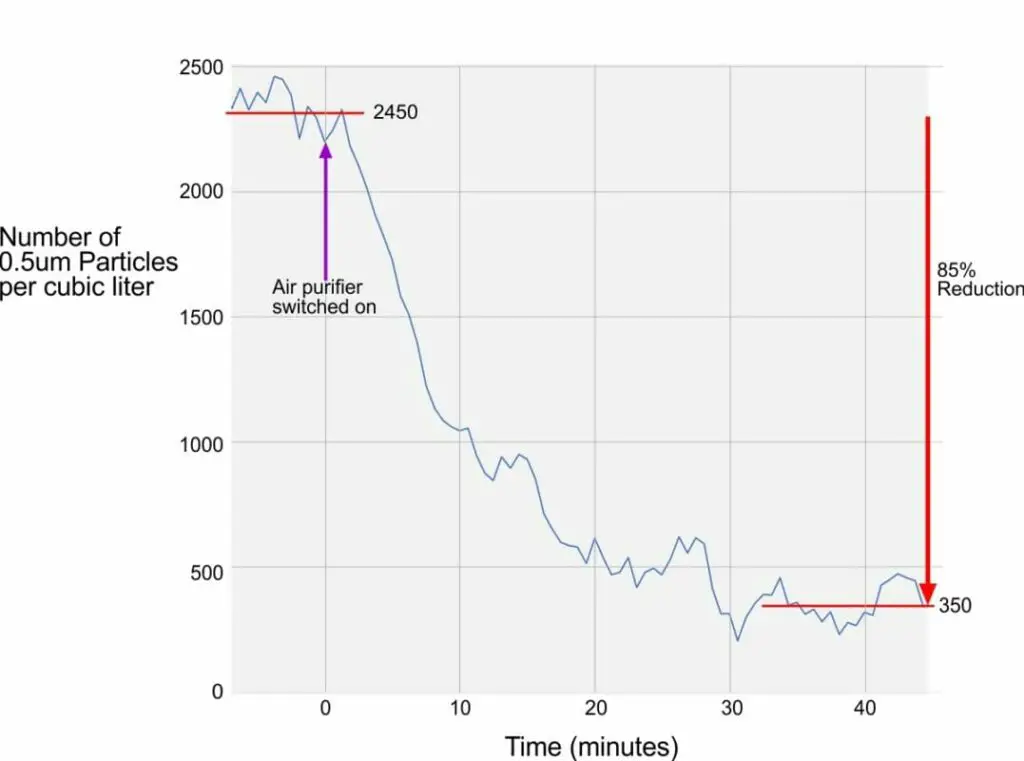
So you can see with the air purifier on its maximum setting and providing 9.4 air changes per hour the reduction in particle count only mildly surpassed the EPAs minimum target for adequate particle reduction. This shows that it is best to be careful in buying an air purifier and to check that it really will deliver a minimum of 5 air changes per hour for your room on its highest setting that you can tolerate the noise. I have written an article about what to look for when buying and air purifier here. In general you will never be able to tolerate an air purifier on its maximum setting for long as it is too noisy.
For some air purifiers you can achieve this by buying a purifier with a timer or plugging it in to a programable smart plug. Usually the smart plug route is best as it allows different schedules on different days of the week. You may want a very different schedule during the working week from that at the weekend. The most expensive air purifiers can be run in this way.
Other air purifiers when the power to them comes on again they sit there doing nothing until you press the power button which means that you cannot control them like this. So you will have to go into the room 45-60 minutes before you want to be in it to switch on the air purifier. These are usually the cheaper air purifiers. In the middle are the Wi-Fi controlled air purifiers which are second best to having the smart home system control them, but much better than having manually to switch the air purifier on 30-45 minutes before you want to be in the room.
An air purifier cannot simply be put on to clean the room for a few minutes and then switched off. It is understandable that people would think that this would work. Unfortunately, very small air particles, especially 0.3um diameter or smaller, can easily penetrate into buildings. So even with the air purifier on, the particle count will never go down to zero. Even with the door of the room and windows shut, fine and ultrafine nano particles will find a way in around the windows or doors or through any cracks in the floors or ceiling.
Also, particles will enter the room when the door is opened. In addition, old particles on the floors or surfaces may be disturbed and rise into the air as you move around. They may also be generated by whatever you are doing in the room or simply fall off you or your clothes. So after the air purifier has been on for a while the particle count will be at a level where the air purifier removes an equal number of particles to those entering/being generated.
So ideally you would keep the air purifier running at all times at the maximum air flow that is not too disturbing for you. If you are going to keep the door and windows of the room shut as ideally you would, you could try lower air flows after the first hour, but you would need to check the air quality with an air quality sensor. Then compare the air quality on thie lower setting with that on the high setting. You may decide that the PM2.5 or particle count is low enough on a lower setting.
However, when deciding, please bear in mind that there is no lower limit known for the effect of particles on human health and consider erring on the side of running the air purifier at a higher setting.
If the particle count does rise it will take about 45 minutes to come down and reach a steady state again.
Stop Any Inbuilt Sensor Being Used by the Air Purifier-Do NOT Run it in Automatic Mode
There are 7 problems with running an air purifier on the automatic setting using the inbuilt sensor-
- Not measuring at the right point in the room-The inbuilt dust sensors are usually cheap and too inaccurate to guide your use of the air purifier. They are also mounted on the air purifier itself, but what is important is what the air quality is like at your mouth where the air is entering your body, not at the inlet of the air purifier.
- They cannot detect ultrafine particles. When using an air purifier in automatic mode, this depends on the air quality sensor to detecting a rise in particles in the room and then increase the speed of the fan. The particle counters in air purifiers cannot even “see” about 90% of the particles in the air-the very smallest ones-“ultrafine particles”. These are the ones that have been found in human brains.Ultrafine particles can vary in concentration out of proportion to the fine and coarse particles that the sensors can see. So the air purifier sensor measurements are fundamentally flawed in terms of protecting human health.
- They often use inaccurate technology for the particles that they are able to count. Not only are the particle sensors flawed in this sense but also because they are cheap and usually use suboptimal measuring technology. They are often based on infrared technology rather than laser diffraction technology. Good, accurate particle counters start at $1000, so obviously these are not built into your air purifier. This is starting to improve with laser particle counters being integrated into some machines, but even these particle counters cannot see ultrafine particles at all.
- There are usually only 3-6 grades of air pollution indicated. Remember that the EPA recommends a PM 2.5 of 12ug/m3 or below as safe for health whereas recent studies suggest that even in the range of 0-12ug/m3 there are health effects. So we really need PM2.5 measurements to within the nearest 2ug/m3 and these sensor ranges may only be specifying to the nearest 35ug/m3.
- Some manufacturer’s set ludicrously high levels for satisfactory levels of pollution. One manufacturer sets the upper limit of good air quality at a AQI of up to 100 equivalent to a PM2.5 of 34ug/m3, whereas the EPA set the limit at 12ug/m3 and current scientific evidence suggests that there is no lower limit so anything above 0 is potentially starting to impact long-term health. Please see this article for further details. So at a PM2.5 of an air purifier by this manufacturer will sit there on its lowest setting letting you breathe the pollution in!
- Most manufacturers do not give specific levels for PM 2.5 for the various ranges that the sensor detects. So you have no idea what for instance that amber light indicating pollution level means when it is on. You are literally staking your life on these guys getting it right. These are the same guys that often/usually represent their machines as covering a 50% greater room area than the EPA specifications would say is reasonable!
- Some manufacturer’s allow the consumer to alter the sensitivity of the sensor. Once this is done you have no way of knowing what the coloured lights to indicate pollution levels mean. Other than by making your own measurements which makes the sensor redundant.
Actions may speak louder than words, top of the range air purifiers do not have inbuilt sensors eg iQair Healthpro Plus, Oransi, Coway. Also reputable companies such as Medify have removed inbuilt sensors from for instance their Medify MA-40 model.
So never run an air purifier in automatic mode! You should run it on the highest setting on which you can tolerate the noise.
Which Rooms an Air Purifier Should be in and Which Position within a Room
a)Which Rooms
A single air purifier will not be able to purify enough air for the whole home. It should be placed in the room in which you will spend the majority of the time. For instance, we have one in the kitchen where my wife works on a computer on the kitchen table and one in my small study adjacent to the kitchen. These are run from 7 AM to 9 PM when we’re not on holiday. We also have one in our bedroom, which runs from 8 PM to 8 AM. In this way when we’re in the house for 90% of the time we are in rooms with purified air.
If there are not enough air purifiers for all members of the family, the elderly and children should be prioritized and have them in their bedrooms, as well as an air purifier in the main living area.
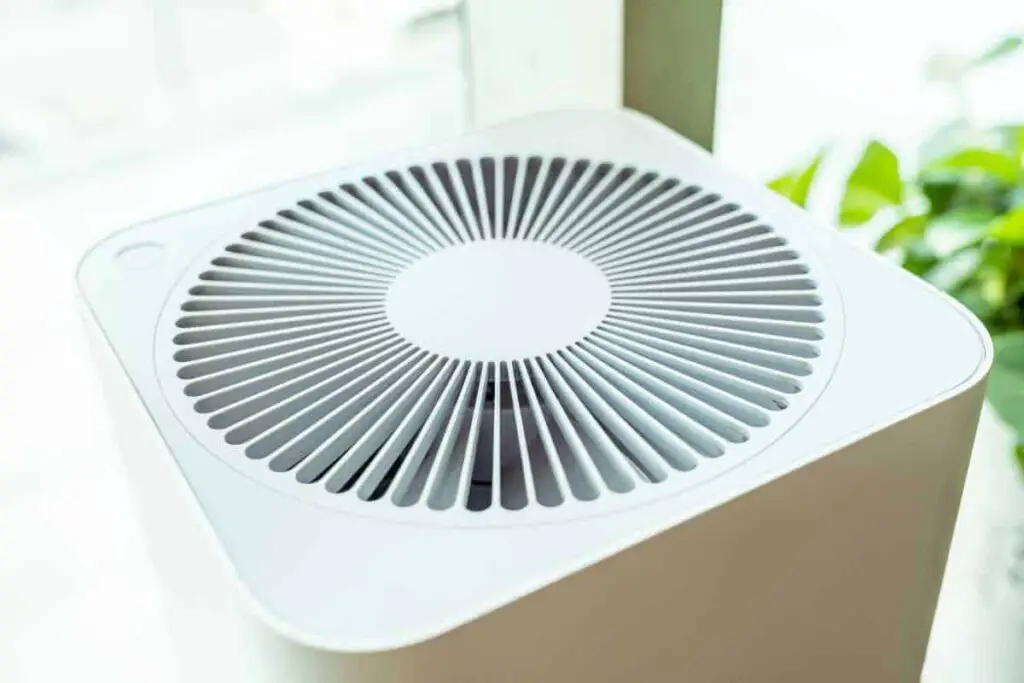
b) Ideal Position of an Air Purifier in Room
Ideally, the air purifier would be 12 to 18 inches from the wall, but this is not always practical. This distance from the wall is so the air from the air purifier participates in air flows in the room to have its maximum effect. The worst place to position an air purifier would be behind curtains. Obviously, the air purifier should not be in a position where either the inlet or particularly the outlet is blocked. Fortunately, air can find a way to get into the intake provided you do not position something over the inlet.
However, it is more important not to block the outlet, and if possible it would be best to direct the clean air to the part of the room where you sit.
Purified air in the room is not uniformly distributed. The area nearest the purifier is the cleanest with the lowest particle count. In the graph below you can see from one of my own experiments how particle count increases with the distance from the air purifier.
[await data from experiments
If people are going to be sitting in a part of a room distant from the air purifier, it would be wise to have a fan blowing the purified air in their direction.
For best air filter performance, the humidity in the room should be less than 85%.
Interaction of Air Purifiers With Extractor Fans
If the air in the room is relatively more purified than the air in the other rooms, then having an extractor fan taking the purified air out of the room to the outside and sucking non purified air in from the other rooms will increase the particle level in the room.
Of course, if the air in the room with the purifier is more polluted even with the air purifier running than the other rooms in the house then having the extractor fan will help. However, when the air purifier has got the particle level down to below the level in the other rooms, it is best to switch the extractor fan off.
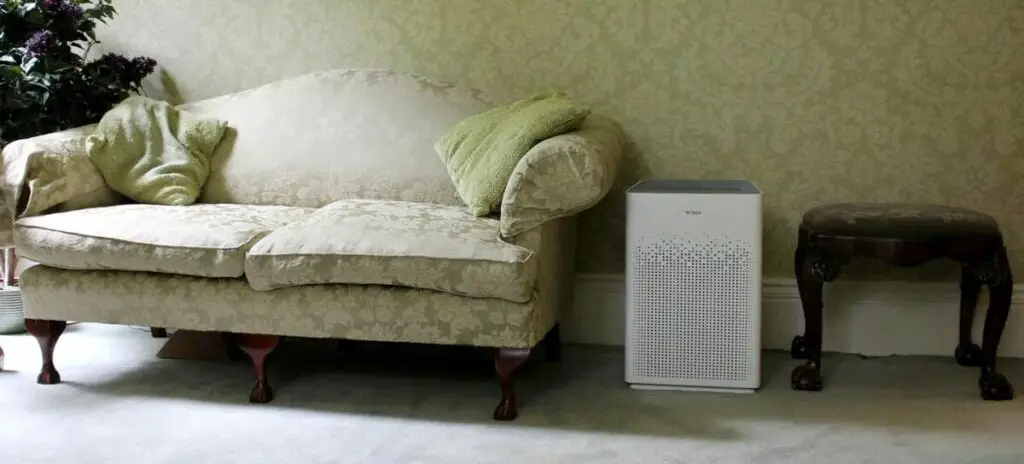
Changing The Air Purifier Filters
Manufacturers specify the time interval that is needed for air purifier filter changes. After a certain amount of filtration, the pores in the filters become blocked the pressure needed to force air through the filters increases, and unless the machine is of very good quality, the air can escape around the filter under pressure rather than going through it. So it is important to change the filters in line with the manufacturer’s specifications. These range from changing the filters every six months to approximately every four years, depending on the manufacturer and the particular filter.
However, the disadvantage with this approach is that different houses or offices will have different amounts of dust in the atmosphere and so a filter change at six months may be reasonable in a fairly dusty environment but unnecessarily soon in a very clean environment.
Obviously, the manufacturer has a vested interest in selling more filters, but there is the moderating influence that no one is going to buy an air purifier that needs very frequent filter changes.
An alternative strategy suggested by some air quality measurement testing corporations is to save money by buying an air testing device and only changing the filter when the particle count goes up. The problem with using particle counting to determine when to change the filter is that the laser particle counters that are used cannot count approximately 90% of the particles in the air as they are simply too small.
So we would have to make an assumption that what is happening to the filtration of large particles as measured by the sensors indicates how the filters are also handling the ultrafine particles. It has been shown that this is not a reasonable assumption as they often vary markedly from one another.
Overall, it seems best to stick to the manufacturer’s specifications regarding changing the filter.
One company, SmartAir have a different approach to assessing the time to change carbon filters. They make the very valid point that different homes will have very different amounts of VOCs in the air. Therefore the air purifiers in different homes will in reality need very different amounts of time between changes of the activated carbon filter. They suggest periodically removing the filter from the air purifier and smelling it by putting your nose within an inch of it. If it smells acidic, sour or chemical then it is time to change it.
Wash the Pre-filter
Most air purifiers come with pre-filters to stop large particles getting to the HEPA filter clogging up the pores in it and degrading its function. The pre-filter may need washing as often as every 2-4 weeks. Some of these pre-filters are not washable, but for those that are it is obviously best to follow the manufacturer’s instructions. In high dust environments, this may even need to be done more often than the manufacturer suggests. It is common for manufacturers suggesting cleaning the pre-filter every 2-4 weeks!
Other Measures Around The Home to Minimize Pollution in the Home
- Vacuum frequently. Probably best to get a robotic vacuum cleaner with a HEPA filter. A robotic vacuum just makes it practical to have a frequent vacuuming schedule. The reason that vacuuming is necessary is that the heavier particles of air pollution fall to the ground before they can get sucked into an air purifier. They can then be disturbed back into the air by your movement in the room
- Use an exhaust fan in the kitchen
- Do not burn hydrocarbons in your home eg use an electric induction hob rather than a gas hob, if you have fires use electric ones rather that gas fires.
- Do not burn wood in your home, eg in fires
- Do not spray chemicals into the atmosphere, scents, etc. If there is a smell, use an air purifier with a heavy-duty carbon filter to remove it. So remove the molecules causing the smell, do not add chemicals to mask it.
- Do not use candles or light incense sticks in the home. These give off particles that are so small they are the best size for penetrating HEPA filters. If you breathe them in, they will get into the deepest parts of your lungs where the air meets the blood and may even enter your bloodstream.
- Get rid of any source of air pollution eg close an open window near a busy road and find the source of any smell and eliminate the cause if possible.
- Periodically let airflow through your home when the pollution outside is low. This is to prevent chemicals or radon gas from being trapped in your home.
When Using an Air Purifier it is Crucial to Test the Air With an Air Quality Meter
The particles in the air cannot be seen, there is no way of sensing whether there are 5000 particles per cubic liter or zero particles per cubic liter. So, the most important thing in using an air purifier is to test the air quality with an air quality meter. I think the major reasons that people do not automatically buy an air quality meter when they buy an air purifier is first that they do not realize that they need one, second that they think their quality meter will be expensive. However, an air quality meter can be bought for as little as $35.
It is almost inevitable that having an air purifier without an air quality meter will lead to mistakes using it. This will mean breathing in inadequately purified air often for years. This may have a considerable toll on health.
So it really is a false economy not to buy at least a cheap air quality meter when using an air purifier.
Conclusion-how to use an air purifier
Once you have brought an air purifier which has an adequate capacity for your room, you can still end up breathing polluted air if you do not use it properly.
How to use an air purifier–
- Run it all the time when you are in the room and ideally have it clean the air in the room at least 45 minutes before you enter the room
- Run it at the maximum speed that you can tolerate in view of the noise
- Keep it 12-18 inches away from walls
- Shut the doors and windows of the room when running the air purifier
- Change the air purifier’s filters in line with manufacturer’s guidelines
- Help it out by removing the sources of pollution, eg frequently vacuuming with a robotic vacuum cleaner that has a HEPA filter
- ALWAYS test the air periodically with an air quality meter to ensure that an error has not crept in somewhere and that the air really is still clean
Related Questions
See Also
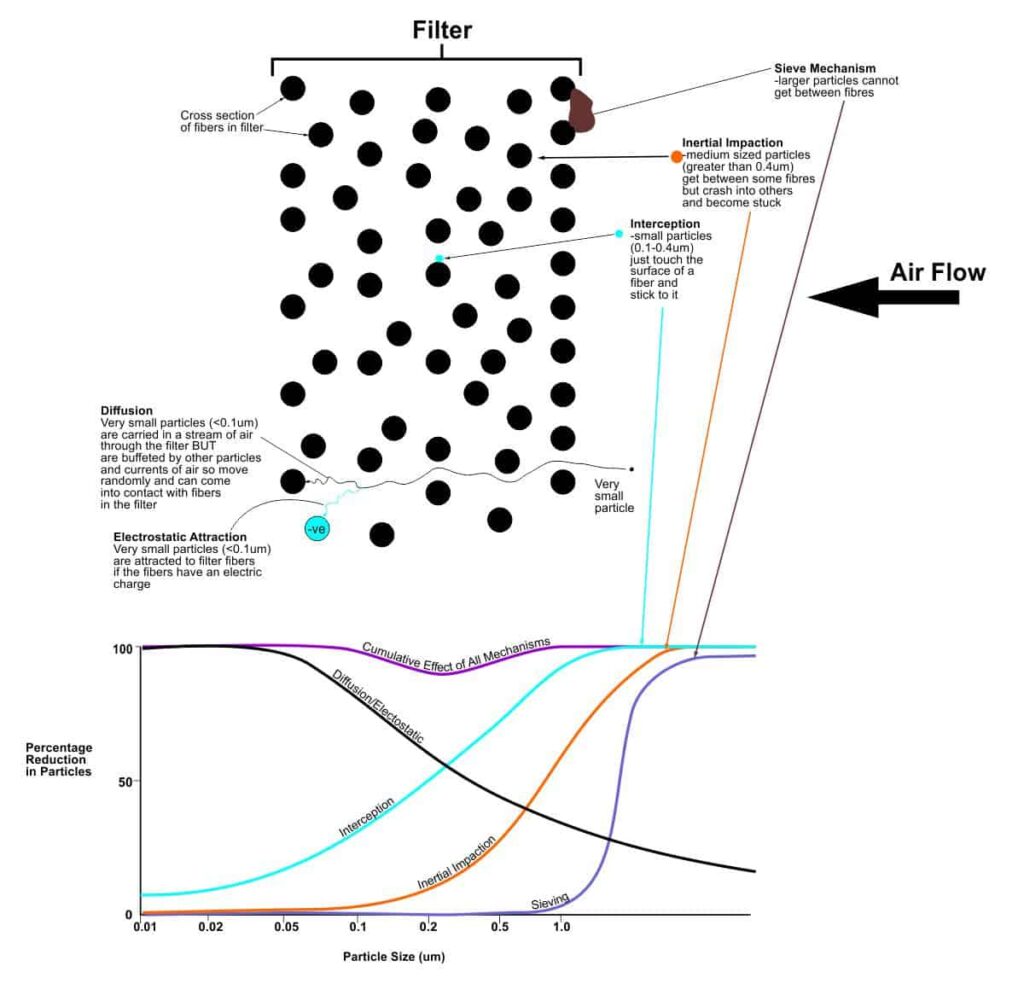
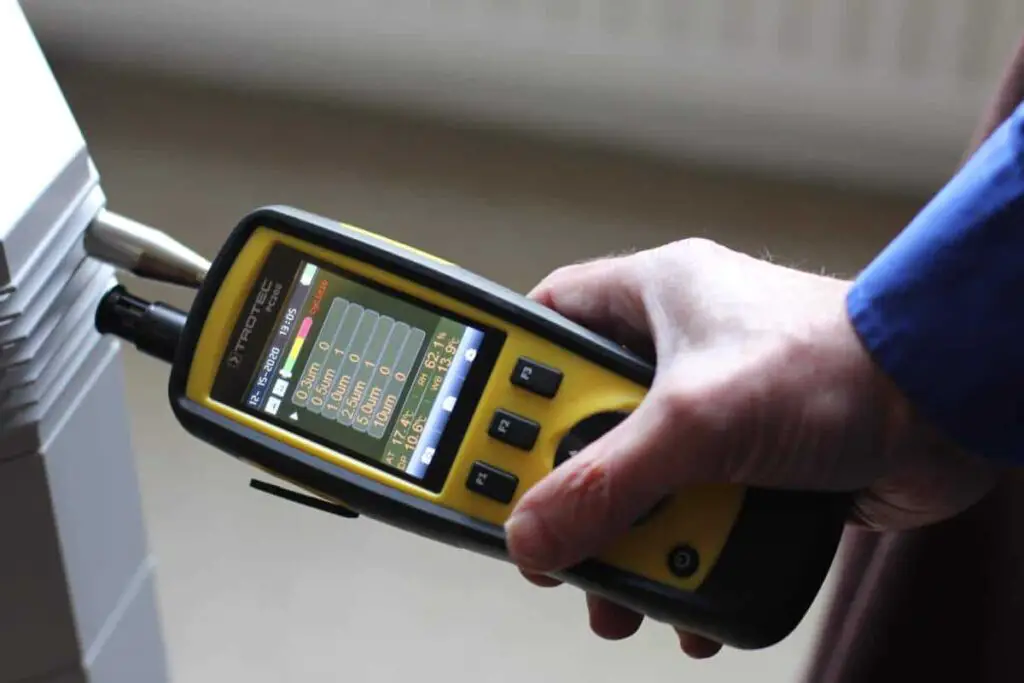
7 Reasons Why Your Air Purifier is Not Working


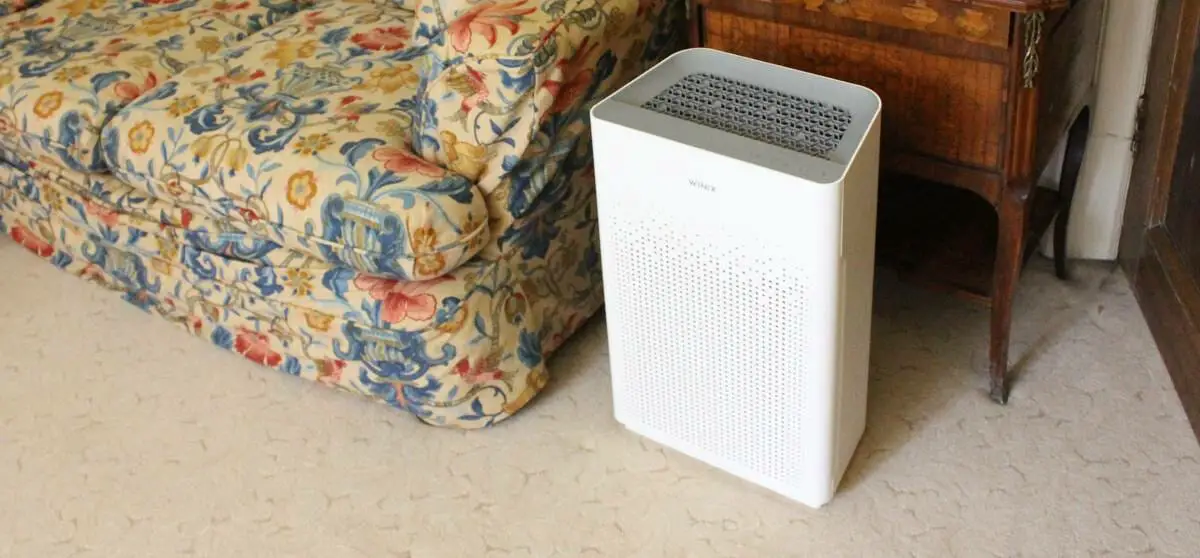
2 responses to “How to Use an Air Purifier-Many Aspects and One Critical Overlooked Point!”
When someone writes an piece of writing he/she maintains the thought of a user
in his/her mind that how a user can understand it.
Therefore that’s why this piece of writing is
amazing. Thanks!
Thank you